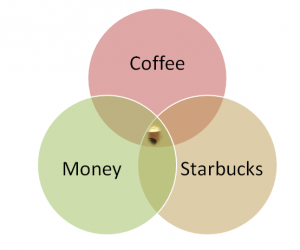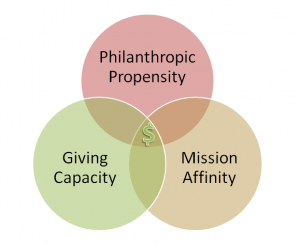Next year will be the 30th anniversary of Marts & Lundy introducing the fundraising world to automated prospect screening. Their Electronic Screening® service, programmed by my old friend Charles Headley, changed forever how organizations found their best prospects.
The goal was simple: find people in your database who have the capacity to give more than they are now, and the propensity to make a gift. You would think the reaction to this was universally positive. After all, the classic peer review sessions were breaking down under the weight of the volume of people, and the growing diversity of wealth.
But it turned out the first thing people wanted to see was their current top prospects. If they were not at the top then it must not work. This is a challenge screening companies have faced ever since.
Grenzebach Glier came along and solved the problem by heavily weighting past giving as the measure of affinity. Voila! Your current best donors were your future best donors. This started a debate which rages to this day: should you mix affinity, propensity, and capacity into a single score or should you create separate scores?
As you may have surmised from the title of this post I am a believer in love for a nonprofit’s mission (affinity), how philanthropic one might be (propensity), and how much one has to give away (capacity) being analyzed as separate elements. I will use one of my favorite beverages to explain:
– You can love or hate Starbucks.
– You can love or hate coffee.
– You can afford Starbucks or not.
For the good folks in Seattle their best customers have the propensity for coffee, the capacity for expensive coffee, and an affinity for Starbucks. They know there are plenty of people who love to have their tasty concoctions but can’t afford FiveBucks. They also know there are people who think their coffee is too acidic and enjoy Dunkin their Donuts. Finally they also know there are people who can’t stand the smell of coffee (I’m married to one of those tea lovers).
In philanthropic terms this means someone with money who is a giver to others can still not be into your mission. Another might love everything you do, but has no discretionary dollars to share.
By measuring each aspect of a person separately you can then bring those individual elements together, and when you do your best prospects will be easy to see.
This approach also ensures that people lacking current affinity, but having capacity and/or propensity, are also easy to find.


I love the coffee analogy! You can certainly get more flexibility in your analysis by separating your ratings, but what if you are a small organization and can’t handle too many top prospects (or ratings for that matter) – would it be better to combine affinity and propensity or just go with affinity? Because if they love Starbucks, I don’t have to worry about whether they love coffee. It’s pretty much a given, right?
For a small organization focusing on affinity and capacity works fine. Propensity becomes important as both the size of the prospect pool, and the complexity of the mission, grows.
Sticking with my coffee obsession, Starbucks used a deeper analysis of propensity to realize they were missing a large group of coffee lovers who liked a lighter/smoother blend so they created the Blonde Roast line.
At the moment I am doing both. I needed a quick and dirty way to analyze our prospect pool, and the easiest way to do this was to create a simple engagement score which shows our most active prospects and donors. I find that it misses nuances, yet it’s really helpful with prioritizing portfolios and segmenting large populations. Also, we are in the process of gathering the data that will enable us to measure those three data points separately. Eventually we will be able to overlay these metrics in order to find that sweet spot that you illustrate. It’s a time consuming project, and it’s ongoing.
Out of three data points that you cite (capacity, propensity, inclination) only capacity is something that is a hard number, something that you can formulate. Propensity and inclination are mushy and subjective. I would be interested to hear more how people are assigning value and tracking data relating to this activity.
I do agree that your best result is going to come from a more nuanced analysis that will result from three separate values overlaid on each other. It’s taking more of the long view of prospect cultivation. But in the short term, the one score is also valuable.
Measuring affinity and propensity well does require a journey to the mushy side of data. It’s worth the trip because within the subjective mush are the keys to creating lasting relationships with your donors. Done right you will be able to better match the passions and interests of your donors with the projects and programs that make up your mission. It will also enable you to quickly see a donor that is disengaging or trying to engage.
I’m excited about what Big Data will bring to the table as we begin to incorporate unstructured data from survey’s, social media, call reports, etc. into our work.